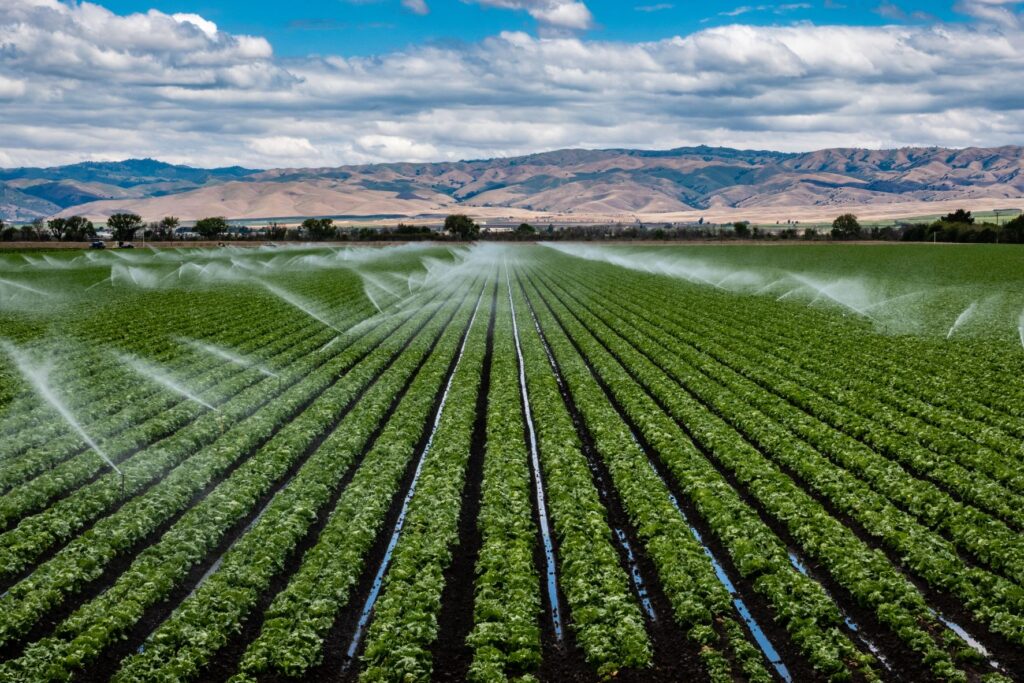Aug 23, 2023Organic growers seek climate change solutions via Farm Bill
As Congress hammers out the 2023 Farm Bill, growing interest in the impacts of agriculture on climate could give organic farmers more political sway as they advocate for funding and programs that help them.
Organic farmers have long sought recognition for their role in mitigating climate change, saying their farming practices promote conservation and help improve soils that store carbon. They say expanding technical and financial assistance such as through the Environmental Quality Incentives Program, or EQIP, would help them further implement activities that build resilient landscapes.


But with the farm bill’s historic focus on commodity crops, those who grow specialty crops — the backbone of many California organic farms — say they have felt largely left out of the omnibus legislation, which renews every five years and sets the agenda for a range of food and agricultural programs. Advancing organic agriculture in federal climate change policy could provide openings for more legislative support.
Yolo County organic farmer Jim Durst said he participates in “very few” federal programs, but he has used EQIP. He said the program has helped him with cover cropping and installation of underground irrigation systems.
The EQIP Organic Initiative pays farmers up to $140,000 for implementing conservation practices ranging from improving irrigation efficiency, creating pollinator habitat and controlling erosion.
“Those (programs) are valuable because they’re long-term investments,” Durst said, adding he would like to see more farm bill dollars go toward helping organic farms go solar or purchase electric tractors and vehicles.
Other farm bill programs such as crop insurance have been less helpful, he said. That’s because farm bills have traditionally been geared to support major commodities such as corn, soybeans, wheat, cotton, rice and dairy. Durst said the cost of federal crop insurance is usually too high for smaller farms such as his that grow higher-value specialty crops, the compensation for which he says is too low.
Javier Zamora, who farms organic fruit, vegetables and flowers in Monterey County, described his frustration trying to get insurance payment after a third of his farm was flooded earlier this year. This is his sixth year carrying crop insurance and the first time he’s filed a claim. The U.S. Department of Agriculture, he said, has “absolutely no idea how to handle a diversified specialty crop grower.”


“They were like, ‘Quite honestly, we never really had a claim for strawberries,’” he said. “I’m like, what are you doing selling insurance policies if you have no idea? You want my $20,000 payment, but now you tell me you don’t have the expertise to handle a loss on strawberries.”
Zamora said he faced “so much red tape” trying to seek further assistance through the federal Emergency Conservation Program, which helps farmers repair damage to farmlands caused by natural disasters. He described the process as “a nightmare,” as months have gone by since he first sent photos and videos of his fields resembling a lake. He said USDA has “already determined it was a total loss,” but he has yet to see any payments.
Zamora said many small farms impacted by flooding are “going belly up” and defaulting on loans, even though federal safety net programs such as ECP are supposed to help farmers, so they don’t go out of business when natural disasters strike. The farm bill, he said, should address such program shortfalls.
“I know the government is making changes,” Zamora said. “The issue here is that the changes take forever.”
Durst said he sees opportunities for organic farmers in federal nutrition programs that increase purchases from local farms, whether the food is for feeding schools, hospitals or prisons. Such programs help stimulate the local economy by allowing dollars to circulate within rural communities, he said.
Rather than subsidizing organic farmers, Durst said he would rather see more federal money go to improving market access for organic farmers to help them sell their products.
“If they have a good, healthy market, they’ll make money,” he said.
Zamora said research and technical assistance that help him make crop decisions on the farm also provide “an extra layer of protection.” He noted how information from University of California Cooperative Extension farm advisors about soil temperature this past spring made him forgo planting crops such as corn and squash, both of which would have yielded poorly due to cool weather conditions.


Gordon Merrick, policy and programs manager for the Organic Farming Research Foundation, said he thinks organic agriculture is at an “inflection point” that would allow organic farmers to make a case for more research funding specific to their needs. The $63 billion organic food and fiber sector, which represents more than 6% of total U.S. food sales, is no longer seen as merely a marketing niche or tool but rather “a big economic driver,” he said.
At the USDA National Institute for Food and Agriculture, organic programs make up less than 2% of its budget. The USDA Agricultural Research Service devotes less than 1% of its budget to studying organic.
“We want to see at least 6% of those research dollars going to organic research topics,” Merrick said.
Organic farmers did win a notable battle during development of the 2018 Farm Bill: They secured mandatory funding levels for the Organic Agriculture Research and Extension Initiative. That means even if the current farm bill lapses, which Merrick said looks increasingly likely, there would be “some type of continuing resolution or other mechanism to maintain mandatory funding levels.”
“Now we can really be focused on making sure things are improving and getting better rather than just trying to focus all of our energy on safeguarding and making sure the program has some amount of funding to continue,” he added.
His organization supports the Organic Science and Research Investment Act introduced in the Senate and the Strengthening Organic Agriculture Research Act in the House, both of which would increase funds for organic research, Merrick said.
Research priorities go beyond practices and techniques that help farmers in the field. Merrick said one big priority during the current farm bill cycle is to secure USDA more funding to study the economic impact organic agriculture has on rural and urban communities. He noted a 2016 study by Penn State University shows that U.S. organic “hotspots,” or regions with high levels of organic agricultural activity, boost local economies.
“Organic creates wealth,” Merrick said. “Policymakers want to know these things so they can create effective policy. I do think now more than ever, that’s being recognized in Congress.”
— Ching Lee is assistant editor of Ag Alert, California Farm Bureau














